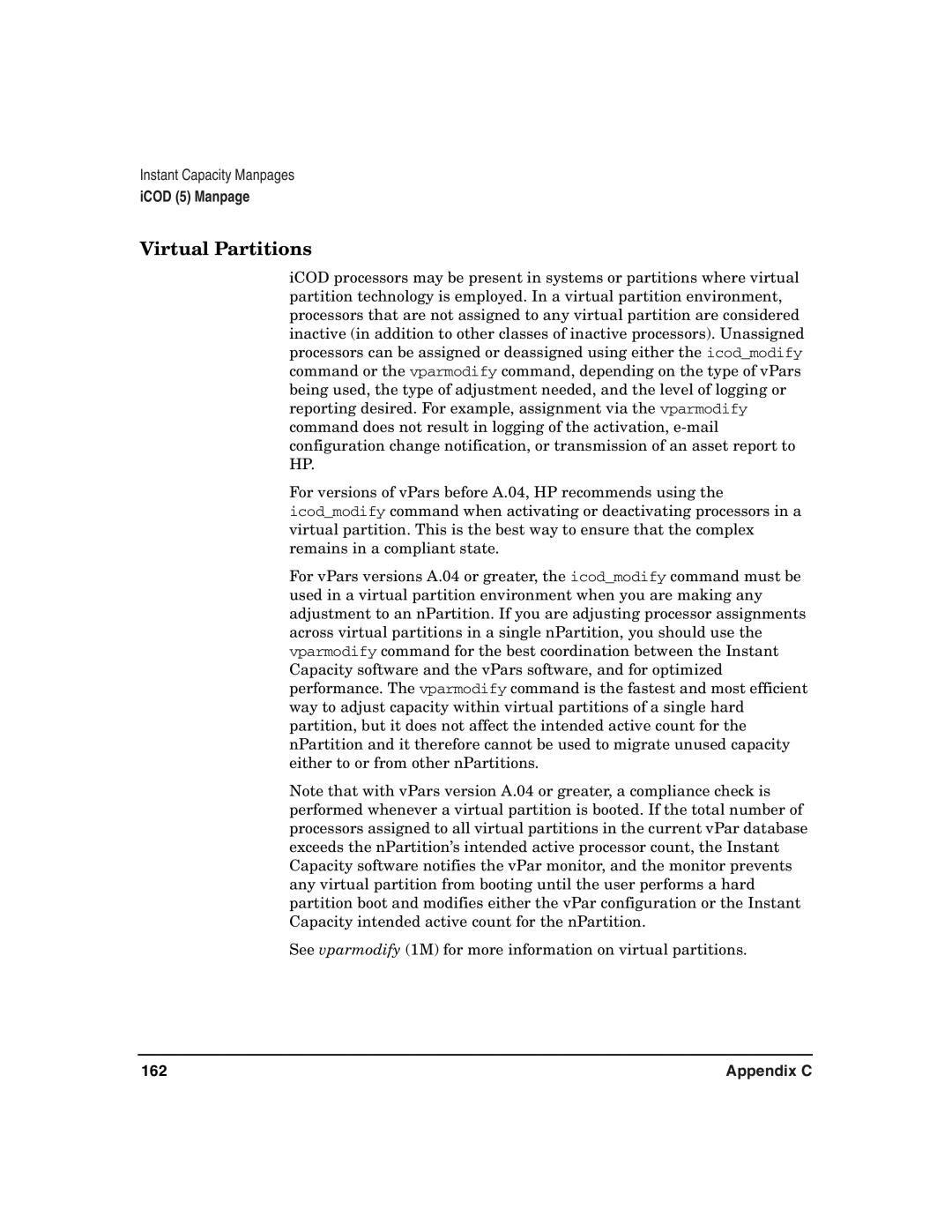Instant Capacity Manpages
iCOD (5) Manpage
Virtual Partitions
iCOD processors may be present in systems or partitions where virtual partition technology is employed. In a virtual partition environment, processors that are not assigned to any virtual partition are considered inactive (in addition to other classes of inactive processors). Unassigned processors can be assigned or deassigned using either the icod_modify command or the vparmodify command, depending on the type of vPars being used, the type of adjustment needed, and the level of logging or reporting desired. For example, assignment via the vparmodify command does not result in logging of the activation,
For versions of vPars before A.04, HP recommends using the
icod_modify command when activating or deactivating processors in a virtual partition. This is the best way to ensure that the complex remains in a compliant state.
For vPars versions A.04 or greater, the icod_modify command must be used in a virtual partition environment when you are making any adjustment to an nPartition. If you are adjusting processor assignments across virtual partitions in a single nPartition, you should use the vparmodify command for the best coordination between the Instant Capacity software and the vPars software, and for optimized performance. The vparmodify command is the fastest and most efficient way to adjust capacity within virtual partitions of a single hard partition, but it does not affect the intended active count for the nPartition and it therefore cannot be used to migrate unused capacity either to or from other nPartitions.
Note that with vPars version A.04 or greater, a compliance check is performed whenever a virtual partition is booted. If the total number of processors assigned to all virtual partitions in the current vPar database exceeds the nPartition’s intended active processor count, the Instant Capacity software notifies the vPar monitor, and the monitor prevents any virtual partition from booting until the user performs a hard partition boot and modifies either the vPar configuration or the Instant Capacity intended active count for the nPartition.
See vparmodify (1M) for more information on virtual partitions.
162 | Appendix C |
